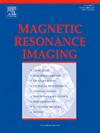基于深度学习的单壳扩散MRI自由水校正。
IF 2.1
4区 医学
Q2 RADIOLOGY, NUCLEAR MEDICINE & MEDICAL IMAGING
引用次数: 0
摘要
扩散磁共振成像(dMRI)中的自由水消除(FWE)模型对于准确估计扩散特性至关重要,因为它可以减轻由自由水引起的部分体积效应,特别是在白质和脑脊液之间的界面。自由水部分体积效应的存在导致在估计扩散特性时存在偏差。此外,现有的FWE数学模型是一种双室模型,可以很好地拟合多壳数据。然而,由于时间限制,单壳收购在临床队列中更为常见。为了克服这些问题,我们提出了一个深度学习框架,重点是绘制和纠正DWI中的自由水部分体积污染。它利用数据驱动技术来推断不同扩散MRI采集方案(包括单壳层采集)中合理的自由水体积。在这项工作中,我们研究了人类连接组计划年轻人(HCP-ya), HCP老化数据集(HCP-a)以及脑肿瘤连接组数据(BTC)。评价结果表明,与以往的单壳游离水估算方法相比,该方法的结果更加可信。该方法在处理新数据时可通过模型微调和b值重映射进行推广。结果表明,扫描/重新扫描数据之间属性估计的一致性和识别神经通路的准确性得到了提高,白质束可视化的清晰度也得到了提高。本文章由计算机程序翻译,如有差异,请以英文原文为准。

Deep learning-based free-water correction for single-shell diffusion MRI
Free-water elimination (FWE) modeling in diffusion magnetic resonance imaging (dMRI) is crucial for accurate estimation of diffusion properties by mitigating the partial volume effects caused by free water, particularly at the interface between white matter and cerebrospinal fluid. The presence of free water partial volume effects leads to biases in estimating diffusion properties. Additionally, the existing mathematical FWE model is a two-compartment model, which can be well posed for multi-shell data. However, single-shell acquisitions are more common in clinical cohorts due to time constraints. To overcome these problems, we proposed a deep-learning framework that focuses on mapping and correcting free-water partial volume contamination in DWI. It utilizes data-driven techniques to infer plausible free-water volumes across different diffusion MRI acquisition schemes, including single-shell acquisitions. In this work, we study the Human Connectome Project Young Adults (HCP-ya), the HCP Aging dataset (HCP-a) as well as Brain Tumor Connectomics Data (BTC). The evaluation demonstrates that it produces more plausible results compared to previous single-shell free water estimation approaches. The proposed method is generalizable through model fine-tuning and b-value re-mapping when dealing with new data. The results have demonstrated improved consistency of properties estimation between scan/rescan data and accuracy in identifying neural pathways, as well as enhanced clarity in the visualization of white matter tracts.
求助全文
通过发布文献求助,成功后即可免费获取论文全文。
去求助
来源期刊

Magnetic resonance imaging
医学-核医学
CiteScore
4.70
自引率
4.00%
发文量
194
审稿时长
83 days
期刊介绍:
Magnetic Resonance Imaging (MRI) is the first international multidisciplinary journal encompassing physical, life, and clinical science investigations as they relate to the development and use of magnetic resonance imaging. MRI is dedicated to both basic research, technological innovation and applications, providing a single forum for communication among radiologists, physicists, chemists, biochemists, biologists, engineers, internists, pathologists, physiologists, computer scientists, and mathematicians.
 求助内容:
求助内容: 应助结果提醒方式:
应助结果提醒方式:


